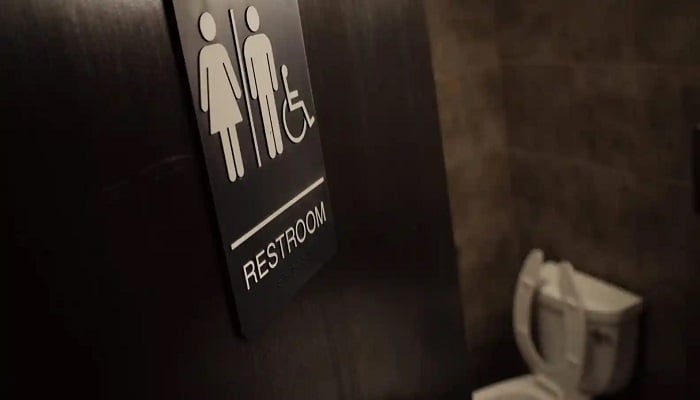The Sapir-Whorf hypothesis suggests that language influences culture, and supporting evidence can be found in a variety of examples.
One such illustration is the German language, which is known for its many simple words that encapsulate concepts that require longer descriptions in other languages, Big Think reports.
According to the report, an interesting example is the word “Sitzpinkler,” which refers to men who urinate while sitting down.
It should be noted that not only does the German language have specific terms for this, but there is also a perceived mastery of this behavior among Germans compared to individuals of other nationalities.
The report argues that these linguistic phenomena can reflect and shape cultural attitudes and practices around gender roles and personal habits.
The results of an in-depth survey by UK-based pollster YouGov into men’s urination preferences have recently been released.
This map focuses specifically on the eight European countries studied, while the other countries studied are Canada, the United States, Mexico, Singapore and Australia. Among 13 countries, Germany stands out as the country with the highest percentage of men reporting sitting down to urinate “all the time” (40%).
Combined with those who do it “most often” (22%), the map indicates that nearly two-thirds of German men are Sitzpinklers (without the ending “s”, as the term is both singular and plural). The data from this survey provides an interesting insight into cultural variations in urination habits between countries.
In terms of male urination habits, German men outperform their counterparts in other countries, with a significant majority (40%) saying they sit “all the time”. Sweden follows in second place, but with a lower percentage of men (22%) sitting ‘all the time’.
However, the vast majority of Swedish men (28%) do it “often”. The Danish men took third place overall, with 44% of them constantly seated. Australians (39%) and Canadians (35%) are fourth and fifth respectively.
The urination habits of French (35%) and Italian (34%) men almost overlap, showing similar overall preferences. However, it should be noted that a much larger proportion of French people (19%) sit “all the time” compared to Italians (13%). Poland (27%) and the UK (24%) find themselves at the bottom of the European rankings, with only 10% of Polish men and 9% of British men systematically sitting down to urinate “all the time”. These results show variations in voiding practices between European countries.
The United States ranks relatively lower on the scale, with only 10% of American men constantly sitting to urinate, and a further 13% doing so “often”. These percentages are higher, however, compared to Mexico and Singapore, where only 6% and 5% of men sit to urinate “all the time” respectively.
The ability of German men to sit up to urinate is a relatively recent phenomenon. An important marker of this cultural change was the introduction of a device called Spuk (also known as a “ghost toilet” or WC-Geist) in Germany in 2004. This device was placed under the toilet seat and, when a man lifted the seat facing the bowl, he issued a voice message asking to return the chair to a horizontal position and to encourage the individual to urinate in a seated position. To add to the authority of the message, the alert can even imitate the voice of personalities such as Angela Merkel, Helmut Kohl or other former chancellors. This innovation reflects an effort to promote the practice of sitting while urinating among German men.
The United States ranks relatively lower on the scale, with only 10% of American men constantly sitting to urinate, and a further 13% doing so “often”. These percentages are higher, however, compared to Mexico and Singapore, where only 6% and 5% of men sit to urinate “all the time” respectively.
The ability of German men to sit up to urinate is a relatively recent phenomenon. An important marker of this cultural change was the introduction of a device called Spuk (also known as a “ghost toilet” or WC-Geist) in Germany in 2004. This device was placed under the toilet seat and, when a man lifted the seat facing the bowl, he issued a voice message asking to return the chair to a horizontal position and to encourage the individual to urinate in a seated position. To add to the authority of the message, the alert can even imitate the voice of personalities such as Angela Merkel, Helmut Kohl or other former chancellors. This innovation reflects an effort to promote the practice of sitting while urinating among German men.

In terms of practicing sitzpinkeln, there is one country that surpasses even Germany, namely Japan. Interestingly, Japan also has a word for it: suwari-shon. In recent decades, the prevalence of seated urination among Japanese men has increased dramatically. In 1999, about 15% of Japanese men said they were sitting, rising to about 40% in 2007, and about 60% in 2020, according to various surveys.
Of those surveyed, just 12% identified themselves as “native” caregivers, while almost half said they had moved from standing to sitting. One of the possible reasons for the rapid rise of suwari-shon can be attributed to Japan’s famous high-tech toilet technology, offering features such as heated seats and multiple jets for those who prefer to sit down.
An important trend contributing to the growing popularity of the seated option and potentially predicting its future increase is the role of the toilet as a preferred place for people to take refuge from the internet or, more generally, to use the internet. Countless social media posts have been composed and consumed in the privacy of toilets, a place where even respected people, such as kings and queens, have walked to.
Get global updates from trusted experts straight from medical specialists, Drita presentshealth info, health news, the latest and most comprehensive Health News Today Daily updates only on Drita.com.

“Travel nerd. Social media evangelist. Zombie junkie. Total creator. Avid webaholic. Friend of animals everywhere. Future teen idol.”


:strip_icc():format(jpeg)/kly-media-production/medias/3387188/original/007486800_1614303448-banner__1_.jpg)



